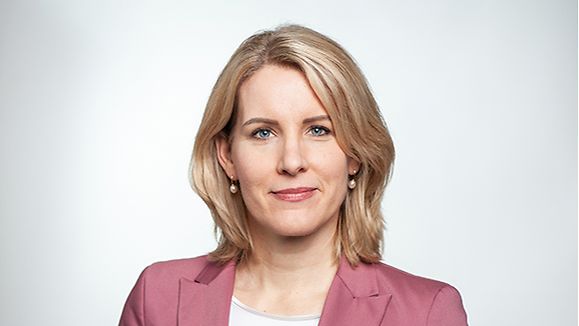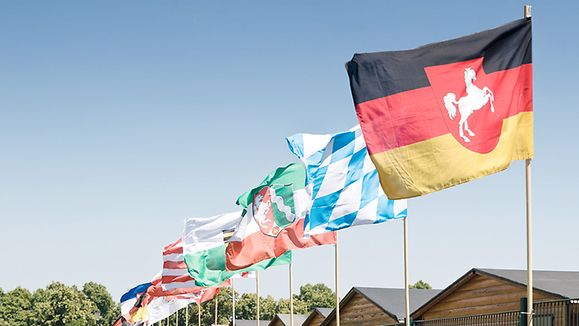Structural Change
News from the Regions in Structural Transition | July 2021
Germany’s regions in structural transition are playing a major role in the energy transition to green energy production. The country's semiconductstart-up-location-germany-pageor goes from strength to strength and universities are supporting start-ups.
Jul 14, 2021
- Hydrogen masterplan for eastern Germany
- World’s first underground hydrogen storage facility for Saxony-Anhalt
- From coal-mining to bioeconomy model region
- Silicon Saxony continues to grow during pandemic
- Bosch opens most modern chip factory in Europe
- German universities supporting spin-off start-ups
- Software for a sustainable recycling economy
- Thuringia launches “repair“ bonus scheme
Hydrogen masterplan for eastern Germany
A masterplan developed by three Fraunhofer research institutes outlines how the transition to green and sustainable hydrogen production will boost the economy in eastern Germany. According to the study compiled by the Fraunhofer Research Institution for Energy Infrastructures and Geothermal Systems (IEG), Fraunhofer Institute for Systems and Innovation Research (ISI) and the Fraunhofer Institute for Ceramic Technologies and Systems (IKTS), the switch from fossil fuels to hydrogen production will launch new value chains across regions, generating synergies beyond state borders. The Fraunhofer team make more than 50 specific proposals for a successful hydrogen market ramp-up in the study, which foresees industrial and transport sector demand of 17.3 TWh by 2030. Germany’s federal government has made hydrogen a bulwark of the country’s energy transition, with eastern Germany – where lignite mining operations previously provided many jobs – identified as one of the key regions for new renewable energies businesses and research activities.
World’s first underground hydrogen storage facility for Saxony-Anhalt
The Bad Lauchstädt Energy Park in Saxony-Anhalt is home to the world’s first large-scale trial of power-to-gas. The planned storage facility – around 700 to 900 meters below Goethestadt Bad Lauchstädt – will see a storage facility of up to 4,500 tons of climate-neutral hydrogen (enough to provide electricity to 64,000 two-person households for a year) created. The project – the first to see hydrogen produced, stored and processed from wind energy on such a scale – was one of ten innovation projects to win the “Living labs for the Energy Transition” competition launched by the German Federal Ministry of Education and Research in 2019.
From coal-mining to bioeconomy model region
The coal-mining region of Central Germany is undergoing a transformation that is seeing it recast as a bioeconomy model region. The region’s traditional links to agriculture, forestry, food, chemicals, and pharmaceuticals serve it well to become a future bioeconomy according to the Fraunhofer Center for Chemical-Biotechnological Processes (CBP). Funding from the Structural Reinforcement Act is attracting businesses and research institutions alike to the region, creating an efficient circular economy that is renewable resources based. Alongside the bioeconomy cluster in Halle, the CBP is planning the creation of a technology and service center to support young bioeconomy companies and start-ups. The Fraunhofer Institute for Microstructure of Materials and Systems IMWS in Halle (Saale) is carrying out research into composites and substances made from renewable raw materials. The institute is a key partner in the Hydrogen Power Storage & Solutions East Germany consortium that is developing technologies for generating and storing green hydrogen.
Silicon Saxony continues to grow during pandemic
The global coronavirus pandemic has fueled increased demand for semiconductors, with the “Silicon Saxony” region in eastern Germany operating at full production capacity. Major semiconductor manufacturers situated in the region are planning major investments to keep up with demand. Dresden-based Globalfoundries expects to invest around EUR 400 million to double its current production capacity of around 400,000 wafers annually. Infineon, also located in Dresden, has announced plans to invest more than EUR 1 billion over the next five years to extend production capacities.
Bosch opens most modern chip factory in Europe
Bosch inaugurated the most modern semiconductor factory in Europe in June. The company plans to build chips for the Internet of Things and the auto sector at the Dresden site, with the EUR 1 billion investment being the largest single investment in the company’s 130-year history. The new factory will be an important part of Germany’s semiconductor manufacturing network. “The new wafer fab is good for Europe, for Germany, and for Saxony. Directly and indirectly, it means many new jobs in a huge growth industry. This billion-euro investment strengthens Silicon Saxony and the entire European semiconductor industry,” said Michael Kretschmer, the minister-president of Saxony. The Silicon Saxony industry association has reported continued growth in the tech cluster since 2009, with more than 2,300 companies employing a workforce of around 65,000 people in the region.
German universities supporting spin-off start-ups
Universities in Dresden and Bremen are providing much-needed financial support and services to spin-off start-up companies. Although four out of five company founders have a university degree, only one in eight German start-ups is a university spin-off according to the German Start-up Monitor. The TU Dresden records around 20 spin-offs each year, with two thirds of these new companies surviving the first three to five years and 90 percent remaining in the city. This success rate is due in part to the university’s “Dresden Exists” start-up service that provides support to current students, alumni and researchers. In Bremen, the “Bridge” scheme provides courses and advice for students, alumni and members of the University of Bremen, the Universities of Bremen and Bremerhaven, and Jacobs University. These services complement the German Federal Ministry of Economic Affairs and Energy’s “Exist” initiative to promote the entrepreneurial environment at universities and research institutes by increasing the number and success of technology- and knowledge-based business start-ups.
Software for a sustainable recycling economy
A team from the University of Bremen is working on intelligent software that will ensure that material flows are networked in order to create a sustainable recycling economy. “Loopsai” (“loops” and “artificial intelligence”) software is a self-learning, open source software solution that automatically arranges businesses into material cycle and makes suggestions as to who can best use the waste of others as raw materials for their own business. The Loopsai team plans to make the self-learning software available free of charge to all interested businesses and municipalities.
Thuringia launches “repair“ bonus scheme
Thuringia is the first German state to introduce a repair bonus scheme for smartphones, laptops and other electronics devices. All residents of the state who have their devices repaired will receive a financial subsidy to deter electrical devices being needlessly thrown away. The scheme, which started in June, will reimburse up to 50 percent of the repair costs up to a maximum of EUR 100 per household.

